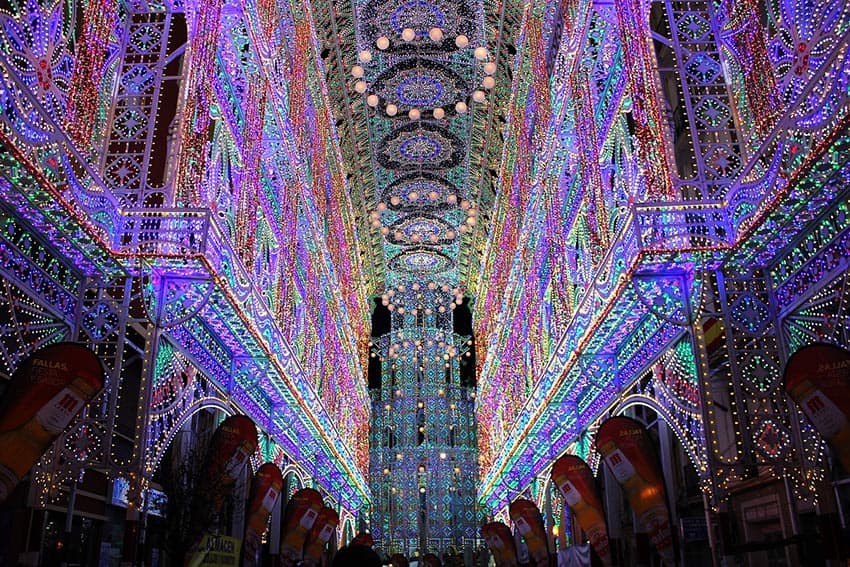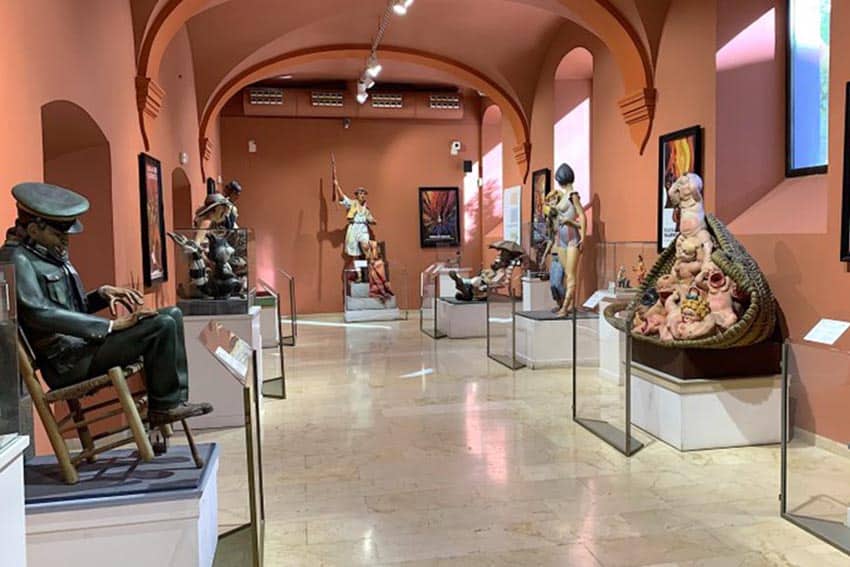
Festival Valencia Las Fallas is Legendary and Not to be Missed
By Suzanne Geudeke

The spectacular fireworks that light up the sky reflect the character of the Mediterranean city: loud, colorful and not afraid to show off. That’s Valencia.
Valencia is the third-largest city in Spain situated 350 kilometers (217 miles) down the coast from Barcelona. Valencia might be smaller and less well known than its siblings Madrid and Barcelona, but it has many faces and double the attitude.
Which Valencia?
Charming Valencia, Tropical Valencia, Historical Valencia, take your pick. Do you want to get to know Festival Valencia? Then you should not miss its main attraction and without a doubt one of the biggest festivities in Europe. Every year, from the 1st until the 19th of March the city climaxes into an explosion of sound, emotion, and color: Las Fallas.
The Origins
Las Fallas is said to have its origins in the eighteenth century when carpenters burned the leftovers of a hard winter’s work in honor of their patron, Saint Josef. Over the years, the piles of leftovers transformed into huge statues of wood and paper, known as “la falla,” humorously criticizing society.
Today, the actual statues are made by hired artists who put in a year’s work to build the most expensive, spectacular falla. For three days, from March 16th-19th, the fallas decorate every street corner and square, some as high as a six-story building.
Discovering the Fallas
It is a real pleasure to go on an early morning stroll, well before the crowds hit the streets, marveling at the enormous works of art, appreciating the sharp and often blunt sense of humor.

It dazzles me as I look up to the giant Dali who has turned the town hall square into his workspace. He is painting the portrait of an equally giant lady and both are surrounded by famous Spanish paintings.
Five minutes down the street a caveman is holding up a woman by her panties while swinging a club; I see tree-like creatures from storybooks; Don Quixote on his horse, famous politicians that look a lot like flies… There is something new to explore at every street corner.
La Mascletá
Even though I could wander around the city for hours, I do not want to miss the mascleta; the most bizarre and impressive fireworks display in Spain. Every day the trains and metros spit out a river of people who flood the streets around the town hall square.
You need to arrive early to get a good spot, meaning that you position yourself in such a way that your body soaks in the maximum amount of decibels, resonating off the buildings. I am standing shoulder to shoulder with Valencians and tourists, waiting for the queen of the festivities, the fallera mayor, to give the signal.
Pyrotechnics

“Señor pyrotechnic, you may start the mascletá!” the fallera mayor finally announces from the balcony of the town hall. As her voice dies out, the first explosion resonates between the buildings.
There is a short moment of silence and then the pyrotechnic orchestrates a 15-minute ear-deafening concert of 120-decibel explosions that shake the ground.
I feel like covering my ears, but people around me gesture that I should open my mouth; it takes the pressure off the eardrums. Here I am, my mouth wide open, the explosions determining my heartbeat.
The smell of gunpowder penetrates the air; small pieces of ash land in my hair; babies start to cry; the explosions build up to an overwhelming finale. All I can do is cheer outrageously as the final explosions resonate between the buildings.
The smell of gunpowder penetrates the air; small pieces of ash land in my hair; babies start to cry; the explosions build up to an overwhelming finale. All I can do is cheer outrageously as the final explosions resonate between the buildings.
I am full of new impressions but ready for more. I soon learn that Las Fallas is about more than just loud and overwhelming fireworks. Fallas is about the spectacular display of lights in la Calle Sueca, about gigantic paellas (a rice dish), about young and old getting together, parading through the streets, tradition, drinking… It is about la ofrenda;the most colorful and often emotional ceremony during Las Fallas.

La Ofrenda
The whole city seems to have gathered. If it is not to participate, it is to see the thousands of people dressed in their spectacular traditional outfits offer flowers to la Virgen de los Desamparados, the patron saint of Valencia.
The procession slowly makes its way through the old part of city, women strapped in their heavy dresses, their hair braided, and their arms full of red and white flowers.
It can take hours for the parade to reach the square in front of the Basilique; where by the end of the day as much as three tons of flowers are accumulated, forming an impressive replica of the virgin.
Here, the flowers hungrily soak in the last tears; many women are not able to control their emotions when finally reaching their patron Saint
For a couple of days, you can marvel at the impressive flower statue. You can pay her a visit after a night of dancing at one of the many street parties, stealing a flower when the night guard turns his back.

And just as suddenly as she appeared, the patron saint disappears. The day the city cleans up, people can be seen walking off the square with arms full of flowers that will decorate their houses for a few more days. When I arrive at the square it has been pillaged by early risers. I return home with a bunch of slightly wilted red flowers.
The Grand Finale
One last night of partying and then it is over. The moment has come for la cremá, the ritual burning of all the fallas. It is the firemen’s busiest night of the year; they move from falla to falla to spray the buildings around them and sometimes the people closest to the flames.
I have come to see the sacrifice of my favorite falla; two giraffes that are clearly madly in love with each other. The flames lick at their ears and dance around their feet. I know that once the giraffes are gone, the party is over. The falleras, queens of the festivities, shed their tears as the 500.000 euro falla gets devoured by the flames. Smoke covers the city…
The next morning, not even a firecracker can be heard. Only a persistent hangover and a feeling of excitement remain of days filled with fireworks, folklore and fiesta… of a year’s long preparation. It is as if nothing ever happened. But that is just make-believe.
In the meantime, Valencia is already busy preparing itself for next year’s Fallas. And so am I. Make sure you do not miss it!
LAS FALLAS:
In 2020, the festival was not HELD due to the Pandemic. Check for the 2021 dates. Las Fallas official website
When: March 1st-19th
La Planta: March 15th, 12.00 midnight
La Mascleta: March 1st-19th, every day at 2pm, Town Hall Square (Plaza del
Ayuntamiento)
La Ofrenda: 17th -18th of March, Plaza de la Virgen
La Cremá: March 19th, starting around 12.30am, all through town
Fireworks: March 16th and 17th. 1am, Paseo de Alameda

Suzanne Geudeke is a freelance writer, mostly writing travel articles. She is based in Valencia.
- The Wild Mississippi: 2340 Miles Across Ten States - April 8, 2024
- Exploring the Floating Villages of Tonle’ Sap Lake - April 3, 2024
- Woman Traveling Solo on Turkish Buses - March 27, 2024


